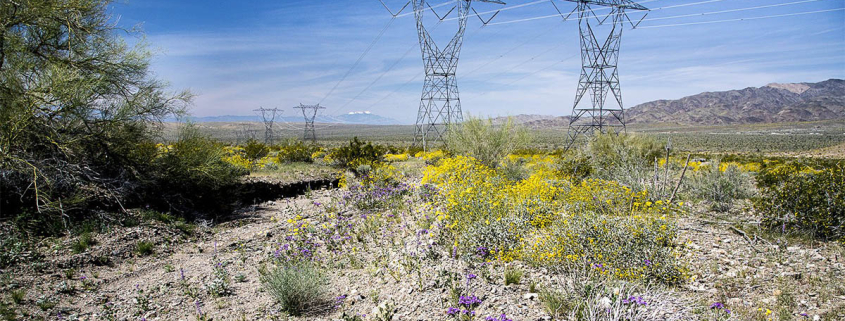Navigating the Heat: How Extreme Weather is Impacting Our Electric Grid
Can renewables, battery storage, distributed energy, and VPP’s help utilities and customers navigate the impacts of extreme weather on our electric grid?
As the summers grow hotter and more intense, the need for reliable and resilient energy solutions becomes ever more critical.
This post explores the innovative strategies VerdeWatts® is implementing to combat the impacts of extreme heatwaves, ensuring stable and sustainable energy supply for communities across the nation. Join me as I delve into the transformative role of VerdeWatts in navigating the challenges of extreme weather impacts upon the Electric Grid
The summer of 2023 set alarming new records for heat, and it looks like 2024 is continuing the trend. By mid-July, record-breaking temperatures were reported across the West, Central U.S., and the Eastern U.S., with about 160 million people under excessive heat alerts.
This extreme heat challenges our electric grid’s resilience, particularly in regions like California, Texas, and parts of New England.
The North American Electric Reliability Corp. (NERC) highlighted in their 2024 Summer Reliability Assessment that these areas are at risk of electricity supply shortfalls during extreme conditions. This isn’t new; we’ve seen rolling blackouts during California’s 2020 heatwave and Texas’s outages during winter storm Uri in 2021. As our climate continues to change, these challenges are becoming more frequent and severe.
The Growing Strain on the Grid
The impact of weather-related electric disturbances has increased significantly, with most disruptions occurring in the distribution grid, which is responsible for 90% of outages. Between 2014 and 2018, demand losses more than doubled, and in the past five years, disruptions have affected 66 million customers, cutting off 317 gigawatts of electricity for extended periods.
These outages are not just inconveniences; they highlight the vulnerabilities in our current infrastructure. As we move towards modernizing and decarbonizing the grid, addressing these reliability risks becomes crucial. Solutions like distributed energy resources (DERs), virtual power plants (VPPs), and integrated resource planning (IRP) are gaining traction as we seek to enhance grid sustainability and resilience.
Water Scarcity and Power Generation
The American West is experiencing its driest period in 1,200 years, a situation that’s only expected to worsen. This aridification poses a direct threat to power output, particularly as consumers increase their electricity use to combat heat. Many power companies are now monitoring water stress levels closely, as droughts and extreme heat can significantly reduce the efficiency and output of thermal power plants, such as coal, nuclear, and natural gas units.
For instance, hydroelectric plants, which rely on sufficient water levels, are facing potential shutdowns. Lake Mead and Lake Powell, two of the largest U.S. hydroelectric reservoirs, are at risk of reaching “dead pool status,” where they can no longer generate power. Projections contained in Bureau of Reclamation’s 24-month study show the lake will drop to 1,056.19 feet by the end of December 2024. By the end of December 2025, Lake Mead will drop to 1,044.33 feet. On July 27, 2022, Lake Mead dropped to its lowest level since it was filled: 1,041.71 feet above sea level. This is a critical issue, as hydroelectric power accounts for about 6% of the U.S. electricity supply.
Addressing the Challenges
To mitigate these risks, the power industry is focusing on several strategies:
- Increasing Generation Capacity: Adding more renewable energy sources and utility-scale storage.
- Expanding Transmission Capacity: Improving the infrastructure to handle higher loads and ensure energy can be transported efficiently across regions.
- Enhancing Coordination: Boosting regional and interregional cooperation to better manage electricity transfers during peak demand times.
The industry is also exploring the potential of VPPs and flexible load programs, which can better integrate DERs and manage demand.
Conclusion
In conclusion, as we navigate these challenges, it’s clear that addressing the reliability of our electric grid in the face of extreme weather is crucial. By implementing technologically advanced solutions such as the EnerSync™ Power Hub by VerdeWatts®, we can work together towards a brighter future, one with access to more resilient and sustainable energy supplies for everyone.
About the Author:
Steve Wilburn is the founder & CEO of VerdeWatts, a company dedicated to innovative energy solutions. Steve has numerous breakthrough patents in the field of renewable energy generation and wireless mesh communications. His patented, biofuels and EV Charging solutions are enabling green transportation to go mainstream. His latest invention, the EnerSync Power Hub™, exemplifies his commitment to innovation. This technologically advanced solution includes his patented wireless mesh communications system to efficiently and seamlessly coordinate dispatchable onsite renewable energy generation and battery storage available from microgrids and VPP’s with the utility grid.
Learn more at verdewatts.com and electrolinkchargers.com.
Photo: Bureau of Land Management, in Public Domain.

 Bureau of Land Management, Public Domain
Bureau of Land Management, Public Domain
